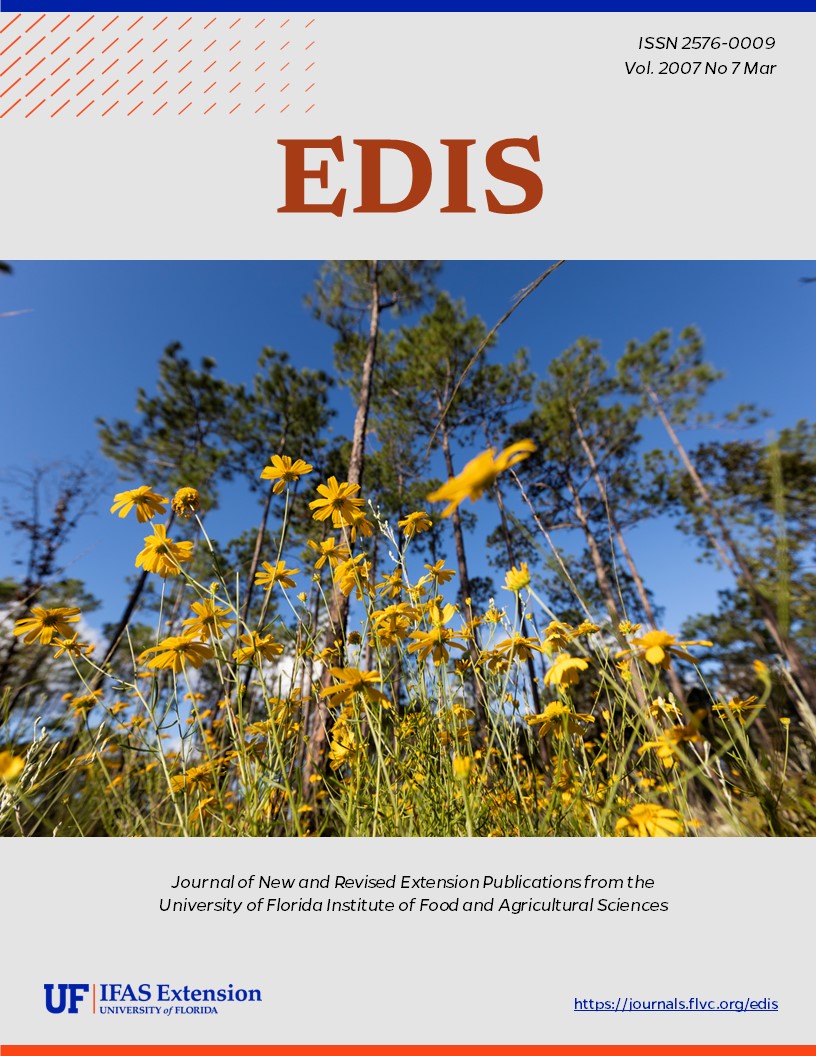Abstract
Circular 1499, an 11-page circular by Charles Jacoby, describes the risk that scientific study of organisms in biological or ecological sciences may lead to introduction of non-indigenous organisms outside their native or existing ranges, and encourages participants in science and engineering fair projects to explicitly manage this risk. Includes references. Published by the UF Department of Fisheries and Aquatic Sciences, February 2007.
References
Jacoby, C., S. Baker, L. Walters and K. Blyler. 2004. A primer on invasive species in coastal and marine waters. Florida Sea Grant College Program SGEB-60. University of Florida Electronic Data Information Source (http://edis.ifas.ufl.edu) SG075. 30 pp.
Carlton, J.T. 2001. Introduced species in U.S. coastal waters: environmental impacts and management priorities. Pew Oceans Commission, Arlington, Virginia. 29 pp.
Ruiz, G.M., P.W. Fofonoff, J.T. Carlton, M.J. Wonham and A.H. Hines. 2000. Invasion of coastal marine communities in North America: apparent patterns, processes, and biases. Annual Review of Ecology and Systematics 31: 481-531. https://doi.org/10.1146/annurev.ecolsys.31.1.481
Williamson, M. and A. Fitter. 1996. The varying success of invaders. Ecology 77: 1661-1666. https://doi.org/10.2307/2265769
Meinesz, A., T. Belsher, T. Thibaut, B. Antolic, K.B. Mustapha, C-F. Boudouresque, D. Chiaverini, F. Cinelli, J-M. Cottalorda, A. Djellouli, A. El Abed, C. Orestano, A.M. Grau, L. Ivesa, A. Jaklin, H. Langar, E. Massuti-Pascual, A. Peirano, L. Tunesi, J. de Vaugelas, N. Zavodnik and A. Zuljevic. 2001. The introduced green alga Caulerpa taxifolia continues to spread in the Mediterranean. Biological Invasions 3: 201-210. https://doi.org/10.1023/A:1014549500678
Jaubert, J.M., J.R.M. Chisholm, A. Minghelli-Roman, M. Marchioretti, J.H. Morrow and H.T. Ripley. 2003. Re-evaluation of the extent of Caulerpa taxifolia development in the northern Mediterranean using airborne spectrographic sensing. Marine Ecology Progress Series 263: 75-82. https://doi.org/10.3354/meps263075
Harmelin-Vivien, M., P. Grancour and J.G. Harmelin. 1999. Impact of Caulerpa taxifolia on Mediterranean fish assemblages: a six year study. pp. 127-138 in: UNEP
(ed) Proceedings of the workshop on invasive Caulerpa species in the Mediterranean, Heraklion, Crete, Greece, 18-20 March 1998. UNEP Mediterranean Action Plan Marine Technical Report Series 125. UNEP, Athens, Greece.
University of Florida, Center for Aquatic and Invasive Plants web site: http://plants.ifas.ufl.edu/seagrant/hydcirc.html http://plants.ifas.ufl.edu/seagrant/hydver2.html http://aquat1.ifas.ufl.edu/mcplnt1a.html
Protect your waters web site: http://protectyourwaters.net/impacts.php
Pimental, D., R. Zuniga and D. Morrison. 2005. Update on the environmental and economic costs associated with alien-invasive species in the United States. Ecological Economics 52: 273-288. https://doi.org/10.1016/j.ecolecon.2004.10.002
Wilcove, D.S., D. Rothstein, J. Dubow, A. Phillips and E. Losos. Quantifying threats to imperiled species in the United States. BioScience 48: 607-615. https://doi.org/10.2307/1313420
American Chestnut Cooperators' Foundation web site: http://www.ppws.vt.edu/griffin/blight.html
Whirling Disease Foundation web site: http://www.whirling-disease.org

